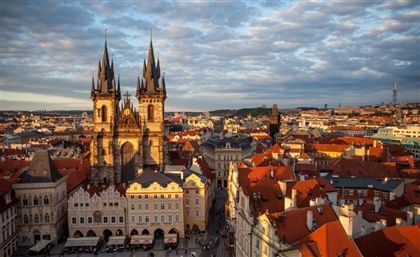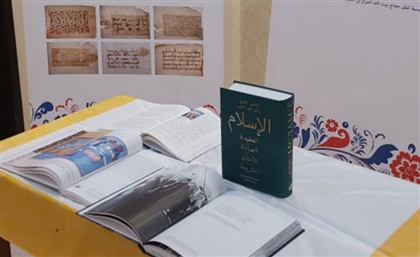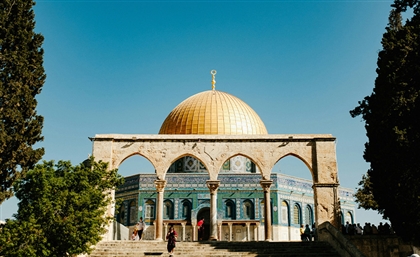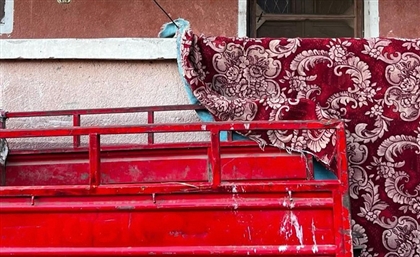Beyond the Pyramids: 8 Must-Visit Historic Sites in Cairo
From Umm Kulthum Museum set in a lush garden to the cliff-side mausoleum of Al Khalwati, these are some must see sites in Cairo.
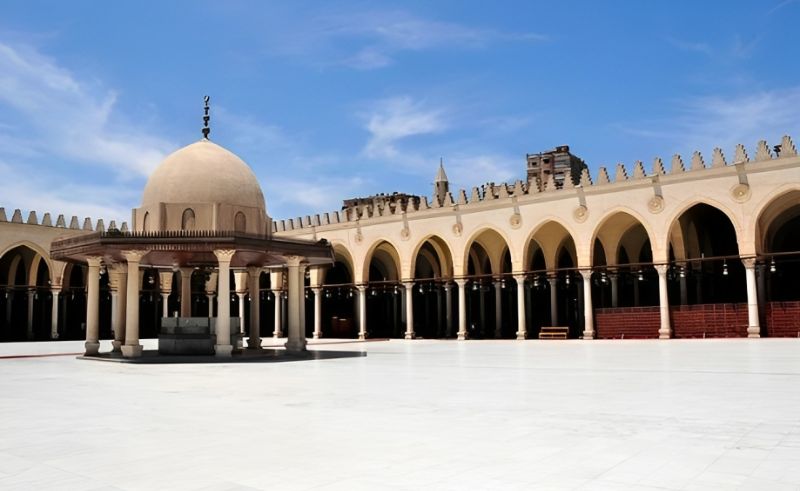
When the prolific Moroccan explorer Ibn Battuta arrived at the gates of Cairo, Egypt, in the 14th century, he could not help but marvel at the metropolis that stretched before him, leading him to famously write on its "thousand minarets" rising from a landscape of "broad regions and fruitful lands."
While justly famed for its pharaonic monuments like the Great Pyramids and Sphinx of Giza, Cairo offers windows into many eras. Its Islamic heritage shines in architectural gems from the city's heyday as the heart of a vast caliphate, whilst elegant 18th century districts later earned it the title ‘Paris on the Nile’. For travellers and poets alike, the ‘City Victorious’ retains the allure that first captivated Ibn Battuta so long ago.
Through imperial dynasties and political upheavals, these eight sites best exemplify all that make Cairo what it is beyond the treasures of the pharaohs…
MAUSOLEUM OF SHAHIN AL-KHALWATI
📍Mokattam
Perched high on the cliffs of Mokattam mountain, overlooking the sprawling cemeteries beneath, lies the mosque and mausoleum of Shahin Al-Khalwati. Originally a Mamluk legionary, Al-Khalwati left the sword behind, and took refuge on Mokattam to lead a hermetic lifestyle. The Mamluk hermit would spend the rest of his life in spiritual seclusion on the hillside. His 30-year sojourn on the mountain ended with his death, whereafter a splendid mosque and mausoleum was built in his honour in 1538.
Although now stripped of its original wood and most of the ornate paraphernalia which no doubt was once a part of the structure, the mausoleum’s ruins still feature intricate calligraphy carved into the structure’s masonry. A peaceful stroll through the cemeteries and gardens below should be followed by a climb up the steep, wooden staircase to the mausoleum, which is also renowned for its outstanding vistas. On a clear day, it is possible to see the Pyramids at Giza, Saqqara and Dahshur on the horizon.
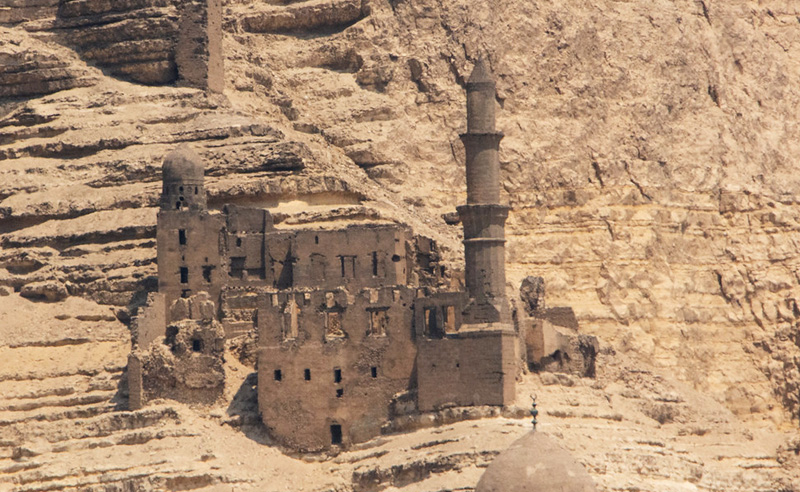
BAYT YAKAN
📍Darb El Ahmar
In the historic district of Darb El Ahmar lies Bayt Yakan, a mansion which for centuries had been the abode of members of Cairo’s numerous ruling dynasties. Built in the 15th century, the mansion’s original features were constructed in the classic Mamluk style, adorned with geometric and arabesque features. Centuries later, the house formed part of land confiscated from the Mamluks by the founder of the Kingdom of Egypt, Muhammad Ali Pasha. Herefrom comes the mansion’s distinct nomenclature, Turkish being the language of Muhammad Ali’s court; Yakan stems from the Turkish word ‘yegen’, meaning ‘nephew’, as the confiscated mansion was gifted to the Pasha’s nephews as a private house.
The belle epoque architecture favoured by Muhammad Ali’s descendants then became a part of the mansion’s rich history, with the Mamluk, belle epoque and baroque features of the mansion all paying homage to the epoch and stature of the mansion’s owners. From the 1960s, when the last of Muhammad Ali’s descendants dwelled in the mansion, up to the late naughties, when the decayed mansion housed a butchershop, the rich architectural history of the house was obscured. In recent years, it was renovated by conservationist couple Ola Said and Alaa el-Habashi. The newly restored mansion is now home to an extensive rare books library.
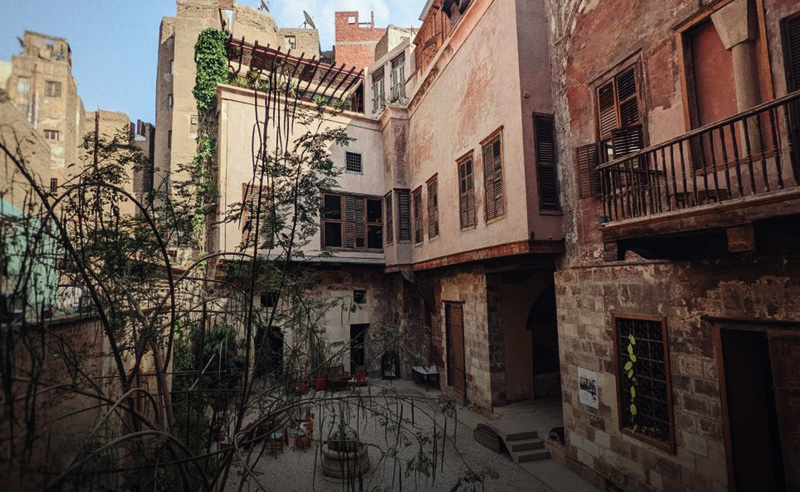 BAYT AL-SUHAYMI
BAYT AL-SUHAYMI
📍Islamic Cairo
A mansion featuring wooden mashrabeyas and centuries-old masonry, Bayt Al-Suhaymi is a reflection of the homes of the Cairene elite of the 1600s. Built along one of old Cairo’s most coveted thoroughfares, the Darb el Asfar, the house was bought by the esteemed Sheikh Ahmed Al-Suhaymi, who extended the original structure, bought up several of the surrounding houses, and incorporated them into the main mansion. With its distinct courtyard and garden (a classic feature of high society houses from that era), the house is now a living museum to the grandiosity of Cairo’s old houses.
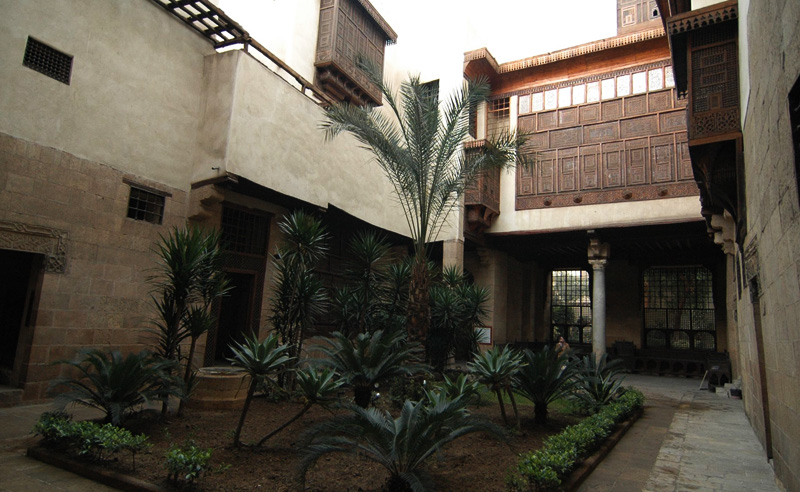 AL RIFAI MOSQUE
AL RIFAI MOSQUE
📍Islamic Cairo
The City Victorious does not want for elaborate and ornate mosques, but perhaps the grandest of all the city’s mosques is Al Rifai. Built between 1869 and 1912, the mosque was commissioned by Ismail Pasha, one of Egypt’s most notorious sovereigns, renowned for modernising Egypt and designing a new Cairo based on European tastes. The mosque’s architecture reflects the Ottoman pedigree of Ismail Pasha and his family, complete with stained-glass windows, an impressive central cupola, two towering minarets and elaborate works in marble. The mosque serves as the resting place of a number of members of Egypt’s former royal family, including Sultan Hussein Kamel, King Fouad I, King Farouk I, as well as the last Shah of Iran, Mohamed Reza Pahlavi.
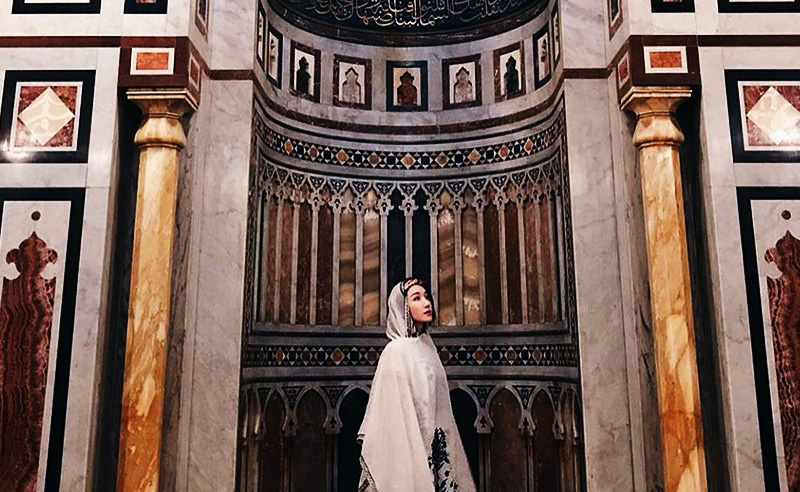 BEN EZRA SYNAGOGUE
BEN EZRA SYNAGOGUE
📍Coptic Cairo
A living testament to the cosmopolitan and diverse history of Cairo, Ben Ezra Synagogue is an ode to religious co-existence. Legend holds that the site of the synagogue was where the baby Moses was discovered by the Pharaoh’s daughter drifting along the Nile in a wicker basket. The original structure was owned by Cairo’s Coptic community, after which it was bought by a Cairene Jew, Abraham Ben Ezra, in 882 AD.
The interior of the synagogue features elaborate carpentry-works, engraved with Stars of David in mother-of-pearl, and richly-decorated stained glass windows. The central platform for reading the Torah, called the ‘bima’, is made of an octagonal marble surface, with gilded Hebrew lettering adorning it. The famed Cairo Geniza, a collection of 400,000 documents chronicling the Cairene Jewish community's history from the 6th to 19th centuries, was discovered in the synagogue’s premises.
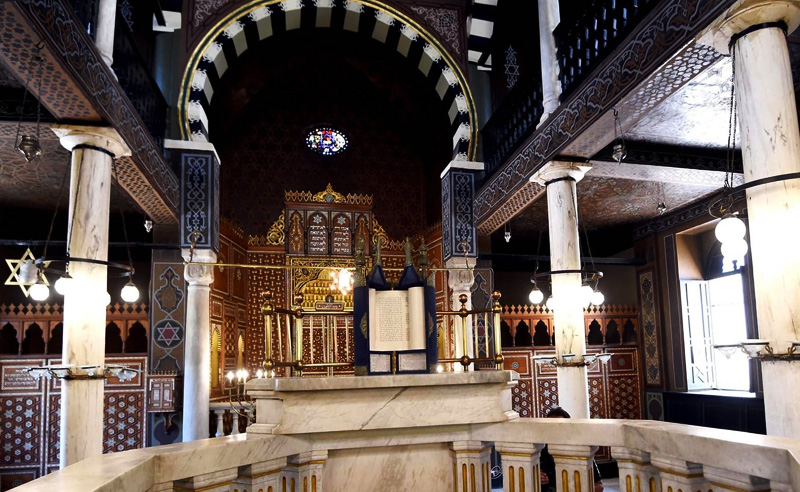 AMR IBN AL-AS MOSQUE
AMR IBN AL-AS MOSQUE
📍Old Cairo
As the conquering Arab armies marched on Egypt in 641 AD under orders from the Caliph Omar ibn Al Khattab, Amr Ibn Al-As - the general of the army - decided to build a mosque at Cairo to signify the land’s new identity as part of the Islamic world. Legend holds that Ibn Al-As set up camp on the southern edges of the Nile, and as he set off to battle against the indigenous Egyptians, a dove entered his tent and laid an egg. When he returned victorious from his conquest, he saw the laid egg as a sign of divine providence, and chose the exact site as the location of what would be the first mosque in Egypt as well as the entire African continent. Built in a simple cubicle structure, and originally relatively unadorned, a visit to the mosque of Ibn Al-As is less an invitation to marvel at architecture and design than it is to bear witness to the founding days of Egypt’s Islamic identity.
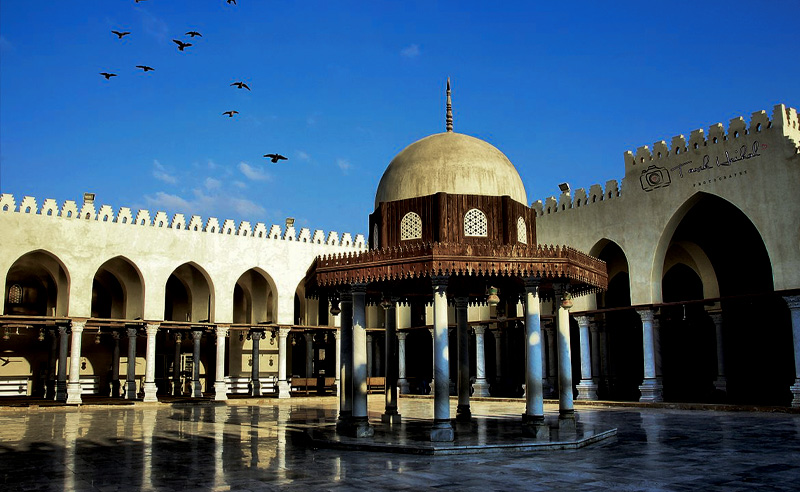 ST. SIMON MONASTERY (THE CAVE CHURCH)
ST. SIMON MONASTERY (THE CAVE CHURCH)
📍Mokkatam
“Services in the city’s 500 churches are usually packed- even those in the 10 000-capacity Cathedral of St Simeon, a cavernous amphitheater blasted out of the Muqattam cliffs in the 1990s. On Thursday nights a vast throng, bussed in from across the city, gathers here to belt out hymns to the accompaniment of synthesizers, electric guitars and a light show that projects the image of the crucified Saviour on to a giant screen,” so wrote Max Rodenbeck on the St Simeon Cathedral in his 1998 love-letter to Cairo, entitled ‘Cairo: The City Victorious’. Cairo’s Coptic community claims lineage to the Pharaonic-era inhabitants of the Nile, and their Church - often called colloquially the Egyptian Church - has its own liturgy in the Coptic tongue, which is a symphony of melodic voices, cymbals and the triangle. A visit to the magnificent cave church of St. Simon should be the last stop after a walk through the Coptic neighbourhood of Zabaleen, a community of trash-collectors who have served the city’s sanitary needs for centuries.
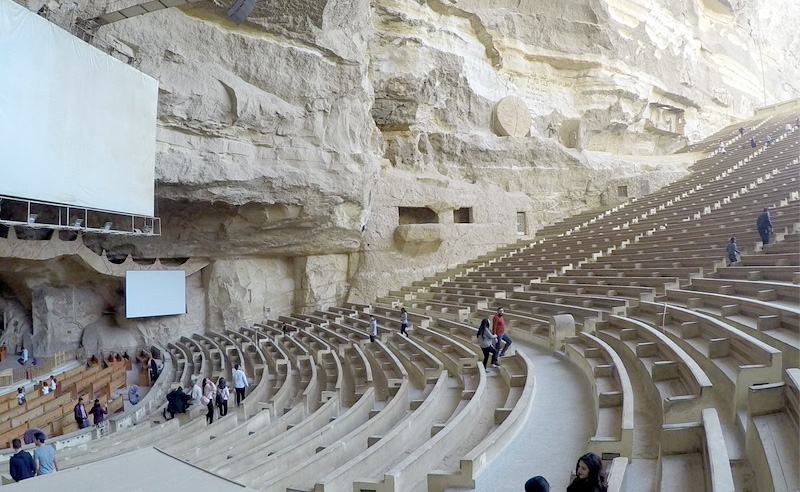 UMM KULTHUM MUSEUM
UMM KULTHUM MUSEUM
📍Rawda Island
Umm Kulthum is to the Arab World what Eva Cesaria is to the Lusophone World, Edith Piaf to the Francophone World, and Miriam Makeba to Anglophone Black Africa. Often called ‘Egypt’s fourth pyramid’, the diva sang every first Thursday evening of the month via radio, with the entire Arab world coming to a standstill in order to listen to her concerts. Older generations recall how bustling metropolises like Cairo, Tunis, Beirut and Baghdad would empty and quieten, as everybody would tune in to her eagerly anticipated concerts.
So prominent was her cultural cachet that when the Free Officers staged their July Revolution in 1952 overthrowing Egypt’s royal family, the head of the Free Officers, who would become president of the Egyptian Republic, Gamal Abdel Nasser, was waiting for the monthly broadcast of her concert. When the concert did not occur, Nasser enquired amongst those in the know why Umm Kulthum hadn’t performed. “She used to perform for the King ya rayes, so we’ve banned her from the airwaves,” was the response Nasser received. Nasser erupted into a fit of rage, saying, “You idiots. Do you want the people to turn against us? Let her perform again immediately.”
Indeed, Umm Kulthum would become a vital part of Egypt’s esteemed unofficial role as head of Third World politics during the Cold War era. Serving often as part ambassadress and part national diva, she became a distinct and vital part of Nasser’s pan-Arabist project, with the leader reciting his frequent speeches straight after her concerts to ensure maximum audience. Her death in 1971 was the most attended public funeral ever seen in the streets of Cairo, with the hordes of adoring crowds hijacking her coffin from the officials tasked with parading it, and personally delivering the coffin to the mosque for funeral prayers - a last show of affection to Umm Kulthum from her millions of adorers.
Her museum, situated in the beautiful, verdant gardens surrounding the Nilometer and the Manasterly Palace (both worth visiting while you are in the precinct), is an ode to the diva’s high sartorialism, with her decadently pearled and rich coloured gowns on display, as well as her signature rhinestone-encrusted sunglasses.
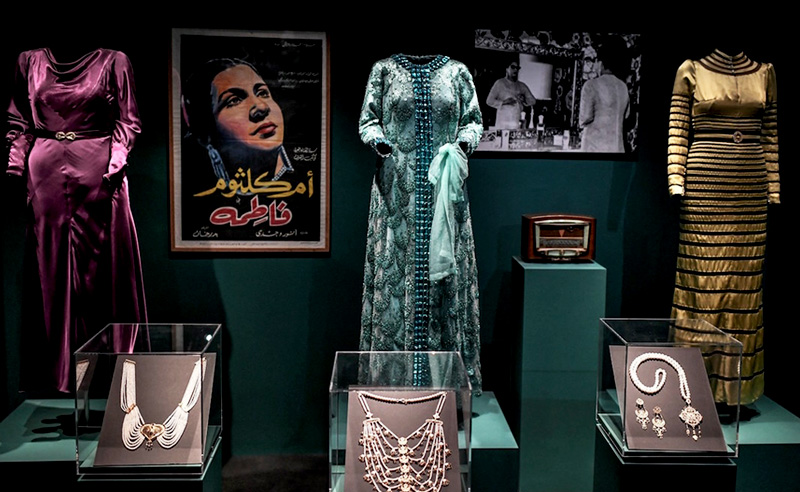
- Previous Article سندباد الورد أضحي سلطاناً: مراجعة لألبوم شب جديد والناظر 'سلطان'
- Next Article IMF Considers Expanding Egypt's USD 3 Billion Loan Program






